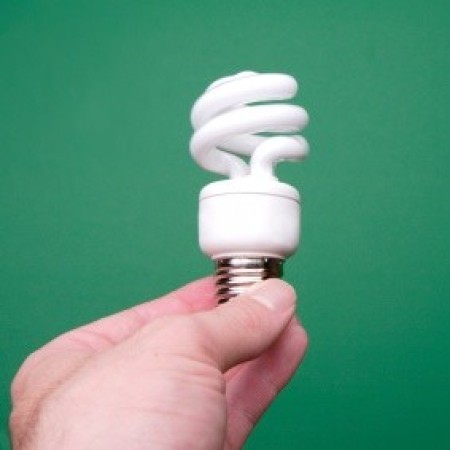Many claim that the "green movement" isn't as green as it claims. True, many green options rob Peter to pay Paul. Bamboo flooring is an example. While it surpasses hardwood flooring in its regeneration, the farming of bamboo is not necessarily done in the greenest of fashions, sacrificing forests for bamboo fields and using fertilizers to increase production. Regardless of the true greenness of products, there's another question raised by the green movement - will it really save as much money as it claims or is this just an advertising plan to promote the movement?
Consider having someone evaluate your home's energy waste. Professional auditors can cost up to $500, but organizations offer do-it-yourself audit packets. Whatever you spend, your return is instant. Even a $500 auditor will return the investment in the first year after energy adjustments are made.
Replacing light bulbs with the new curly CFL bulbs also brings a nearly instant return on your money. Power companies and home improvement stores offer sales on these bulbs that bring their cost near those of the traditional bulbs. However, the expected cost to replace every bulb in the house with the new style is about $100. The return will be refunded within eight months of electric usage, however. The projected annual savings simply for replacing light bulbs in a home is $200.
A few tubes of caulk, a caulk gun, a few hours, and some messy fingers bring an instant return. Caulk gaps in doorframes, window sills, molding, and any other crevice that might let warm/cool air escape and you'll see an instant savings on your energy bills. Caulk is relatively cheap and can bring $250 in savings to a leaky home.
Investing $300 in a new water saving toilet offers a reasonable return if you have municipal water. Even those with wells may want to watch their usage. The annual savings in water bills on these new toilets is estimated to be $100.
The first energy efficient action that comes to mind is insulating the home. For some this can be done in a weekend with a friend's help. For others, it requires a professional to do some reconstruction and insulation. The overall benefit is a more evenly heated/cooled home and less heating/cooling costs. Having a home completely insulated can cost as much as $5,000 and earn only a $350 yearly savings. While it's something everyone should have done, it could take ten years or more to return the investment.
The next most common energy solution is window replacement. Again, the appearance and convenience of new-style windows definitely adds to the return value of the windows; however, the dollar value is about $700 a year. Replacement in a typical home costs about $4,000, making the windows earn their return in a little over five years based on savings alone.
Those homes fitted with ductwork for heating and cooling should have the ducts inspected and sealed to prevent leaks. This will reduce the amount of energy needed to heat and cool the home enough to generate a $250 annual savings. However, professional duct sealing and repair can be costly--$3,000 for the average home. The time it takes to recoup the investment? Five years.
Some hate them and others love them, but ceiling fans offer a long term return on their original cost. The savings of $10 a year in energy bills will take quite awhile to accumulate.
Large appliance replacement takes some time to recover as well. Energy Star refrigerators and freezers are great choices if your old one is chanting a dying tune, but remember that it will take eight years or more for the energy savings alone to recover the cost of the appliance.

Add your voice! Click below to comment. ThriftyFun is powered by your wisdom!
The author only gives the money savings on CFLs, why not mention that unlike incandescent they contain mercury and rare earth phosphors to produce light and that many people report problems, both physical and mental from flourescent lighting. Most are not dimmable, and the ones that are usually won't work with standard dimmers, thus adding signifigant cost and waste to replace exisiting dimmers that functional well and can greatly reduce the cost of incandescents if used properly,and they will end up in landfills.
We found water saving toilets, one standard height and the other is called comfort height, about 4 inches higher. They were under 200 dollars at Home Depot.
I totally agree, zoodad. CFLs are not the answer. I've read that incandescents are being banned in the UK, and will be here, starting in a year or two.
CFL's are not only potentially dangerous, their so-called savings is grossly exaggerated. After hearing about the dangers, I switched back to incandescents, and it made no difference in my electric bill. Even electricians I know say that CFL's don't save much energy or money. I, too, am looking forward to LED lights. Meanwhile, I want to stockpile incandescents, CFL's are just too dangerous.
Add your voice! Click below to comment. ThriftyFun is powered by your wisdom!